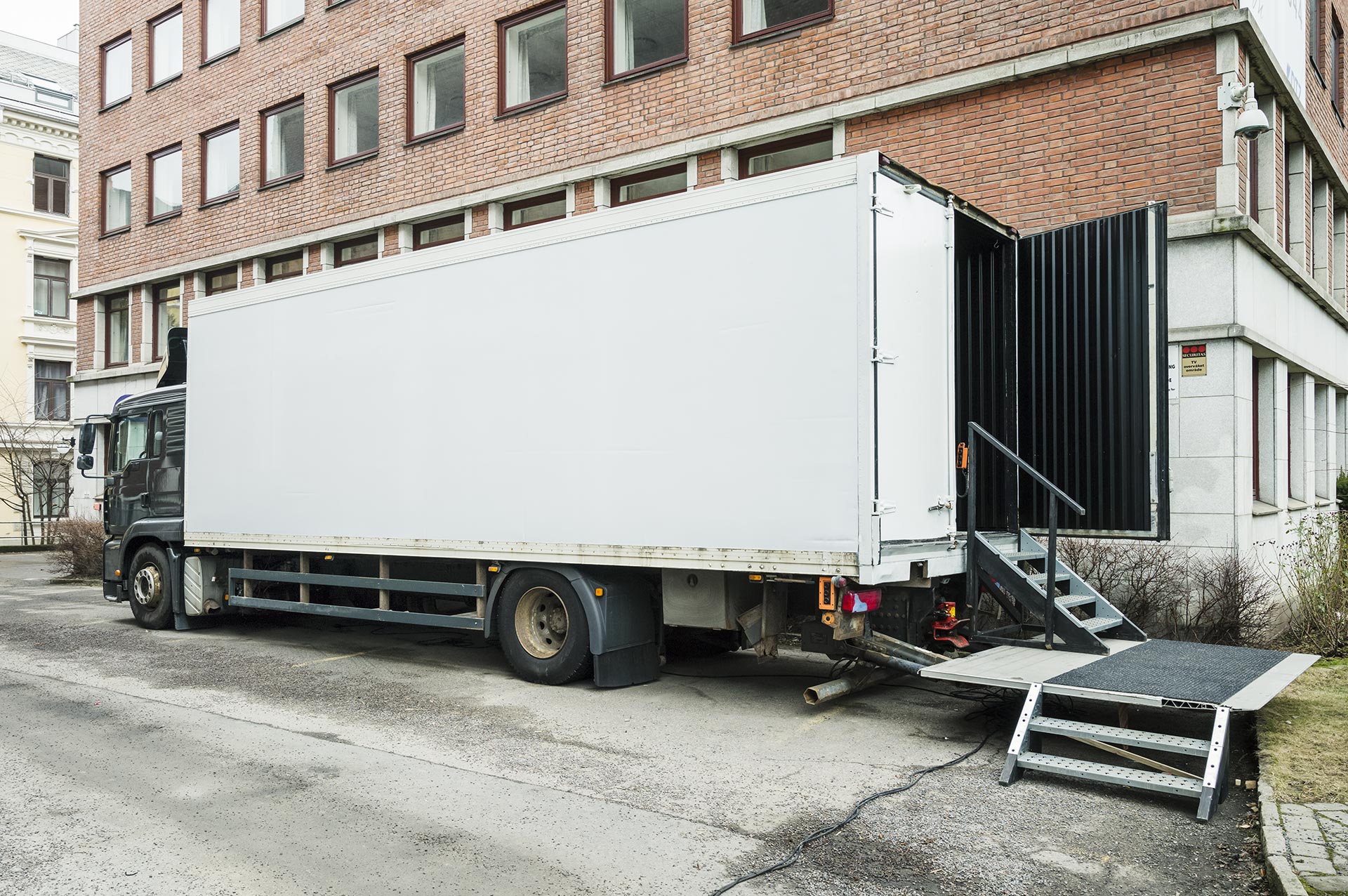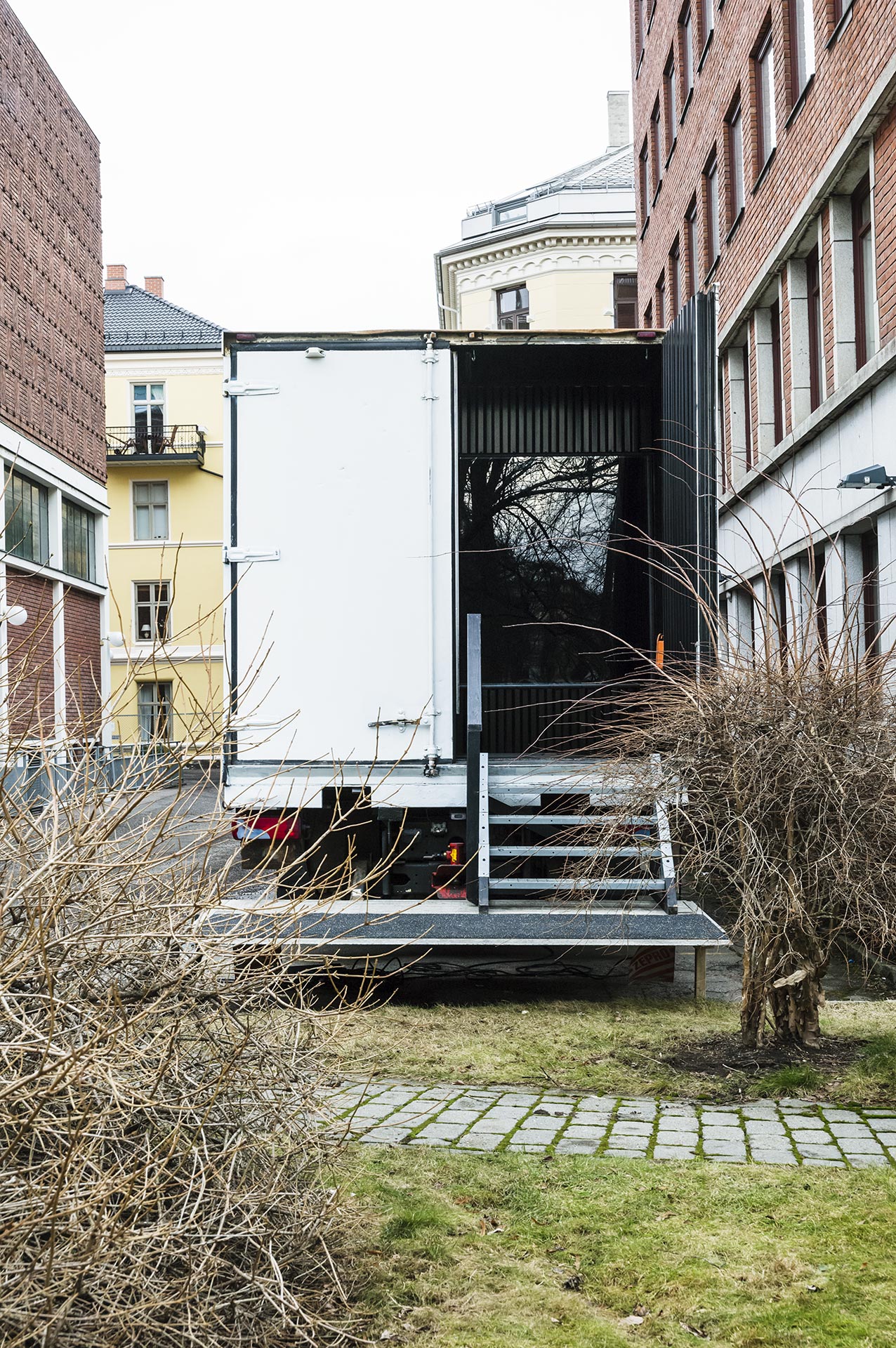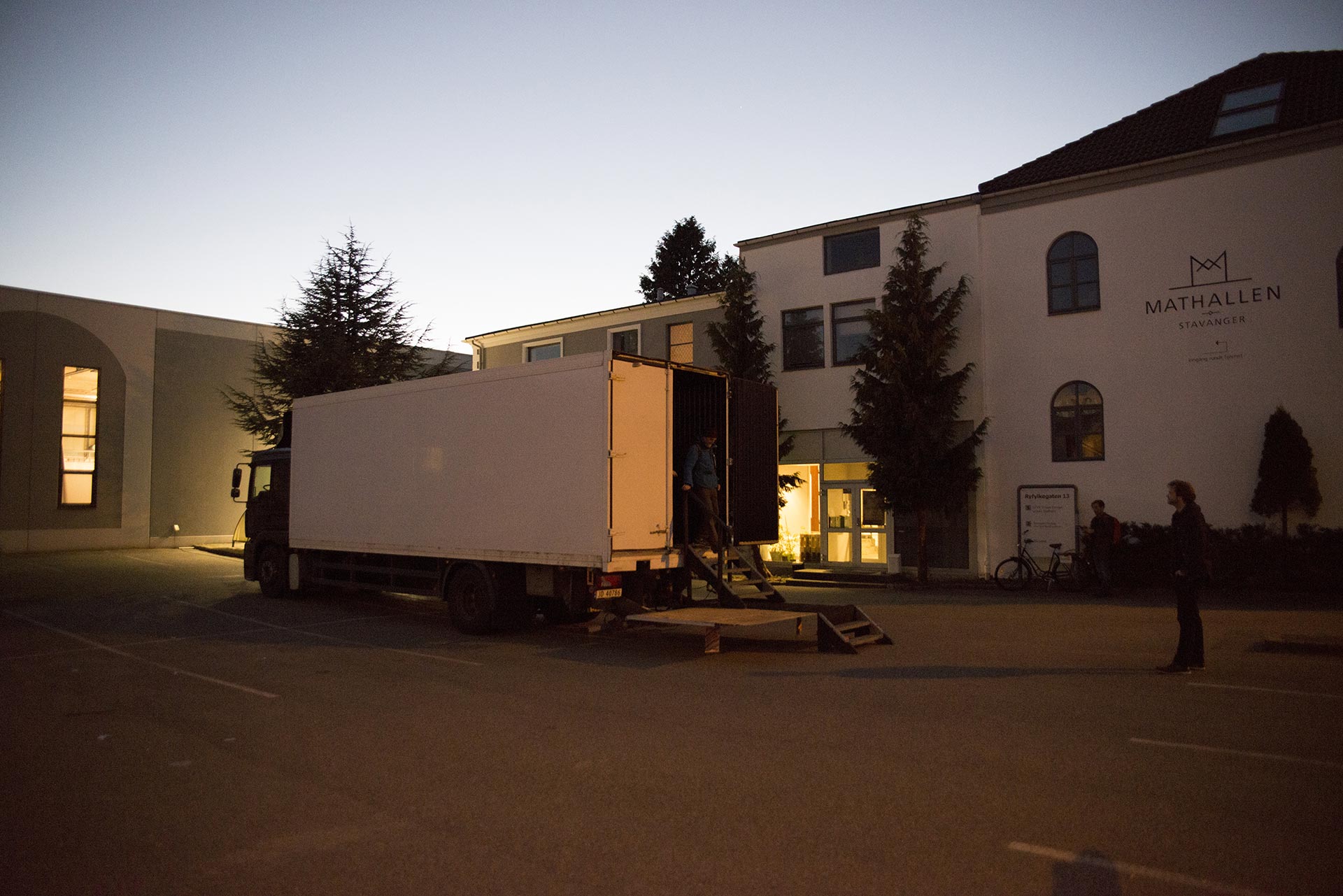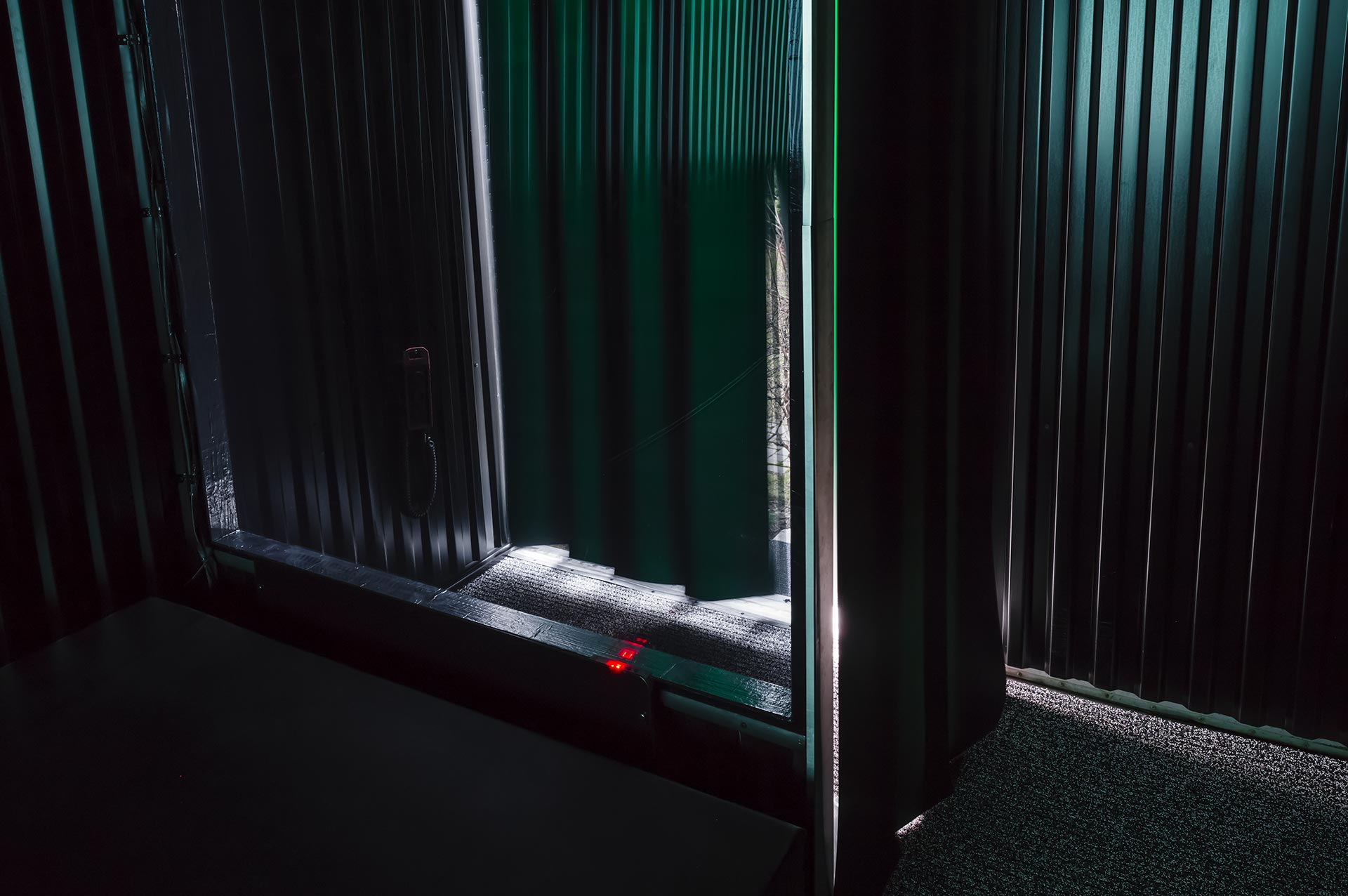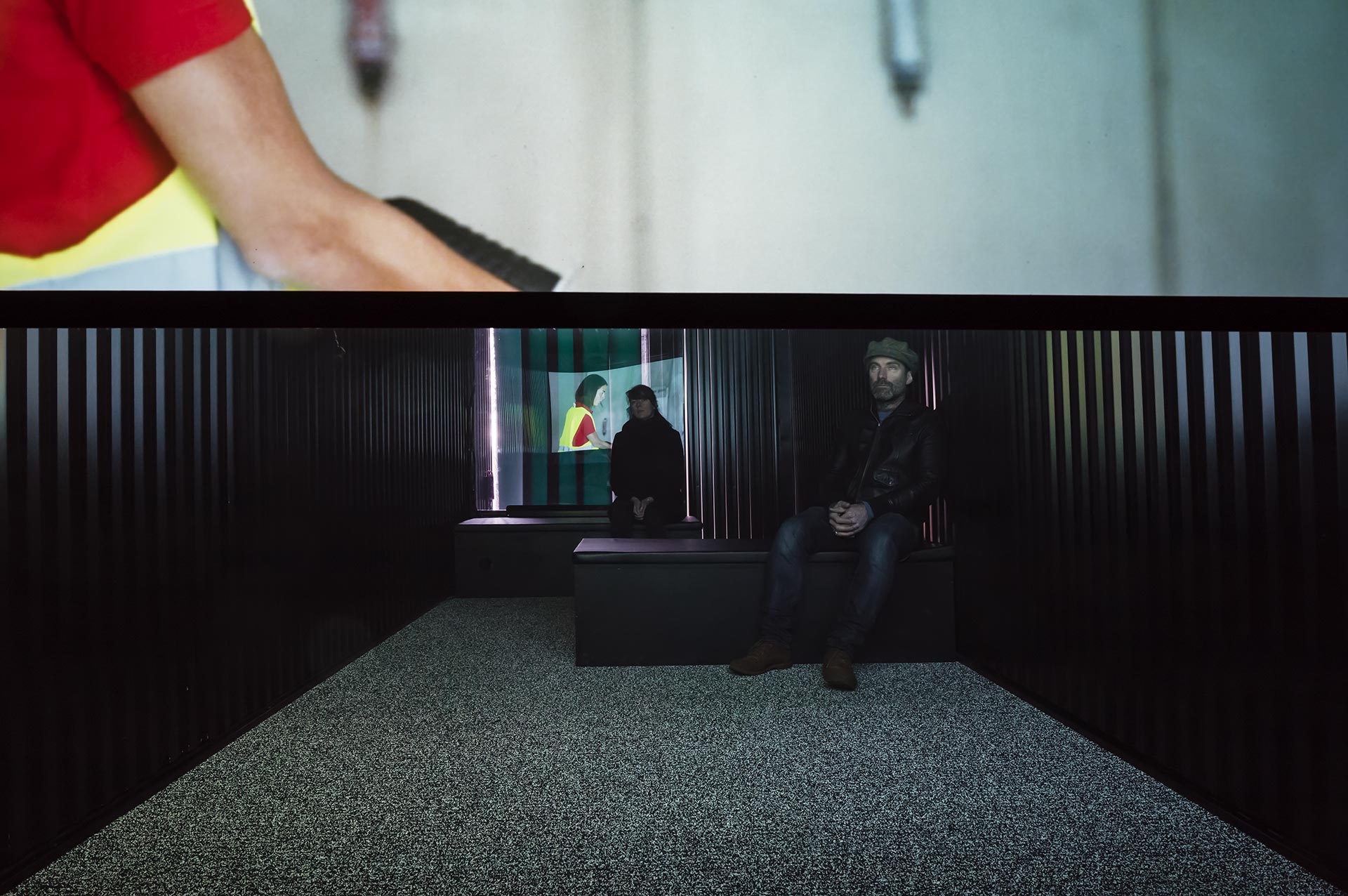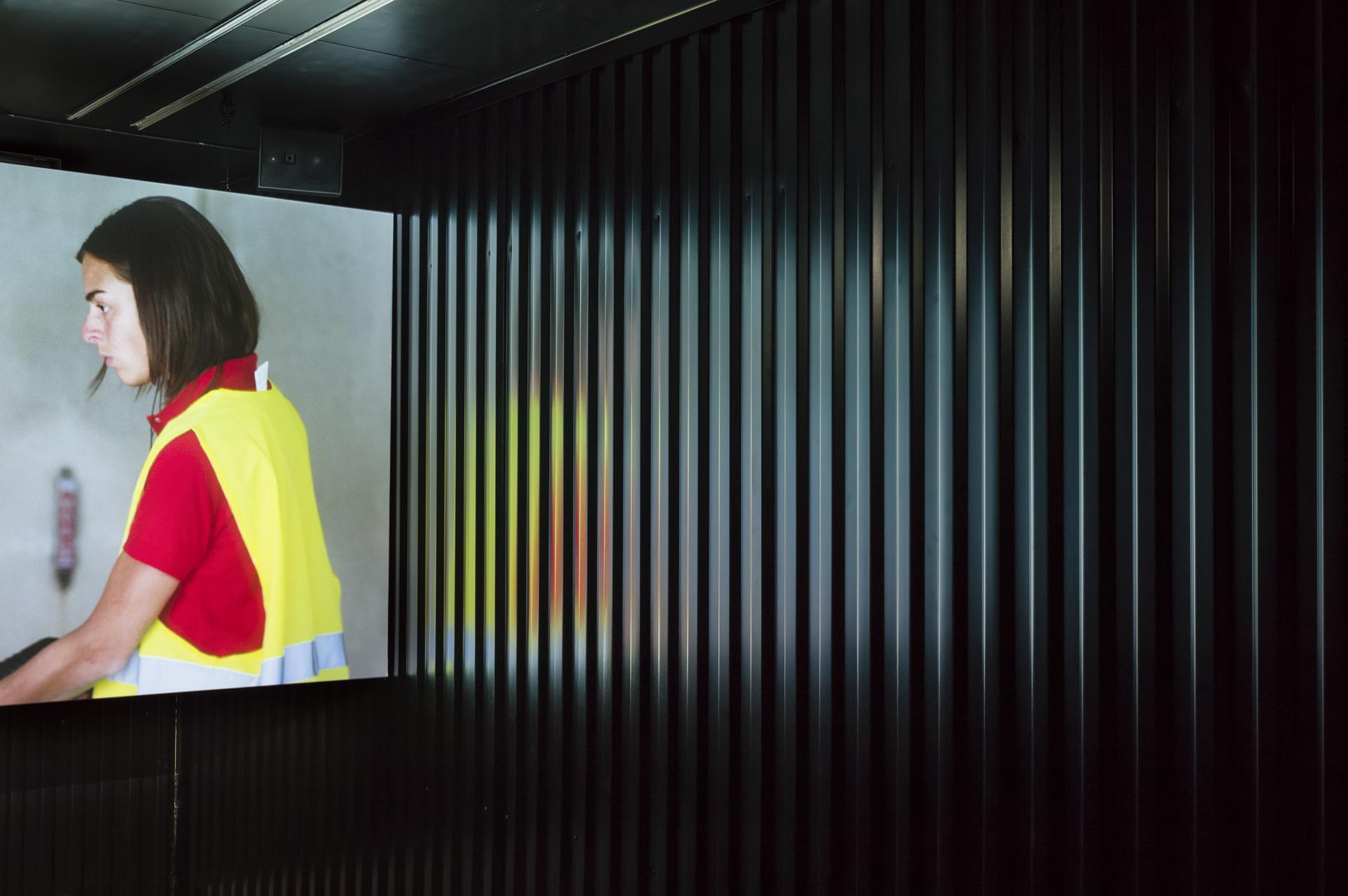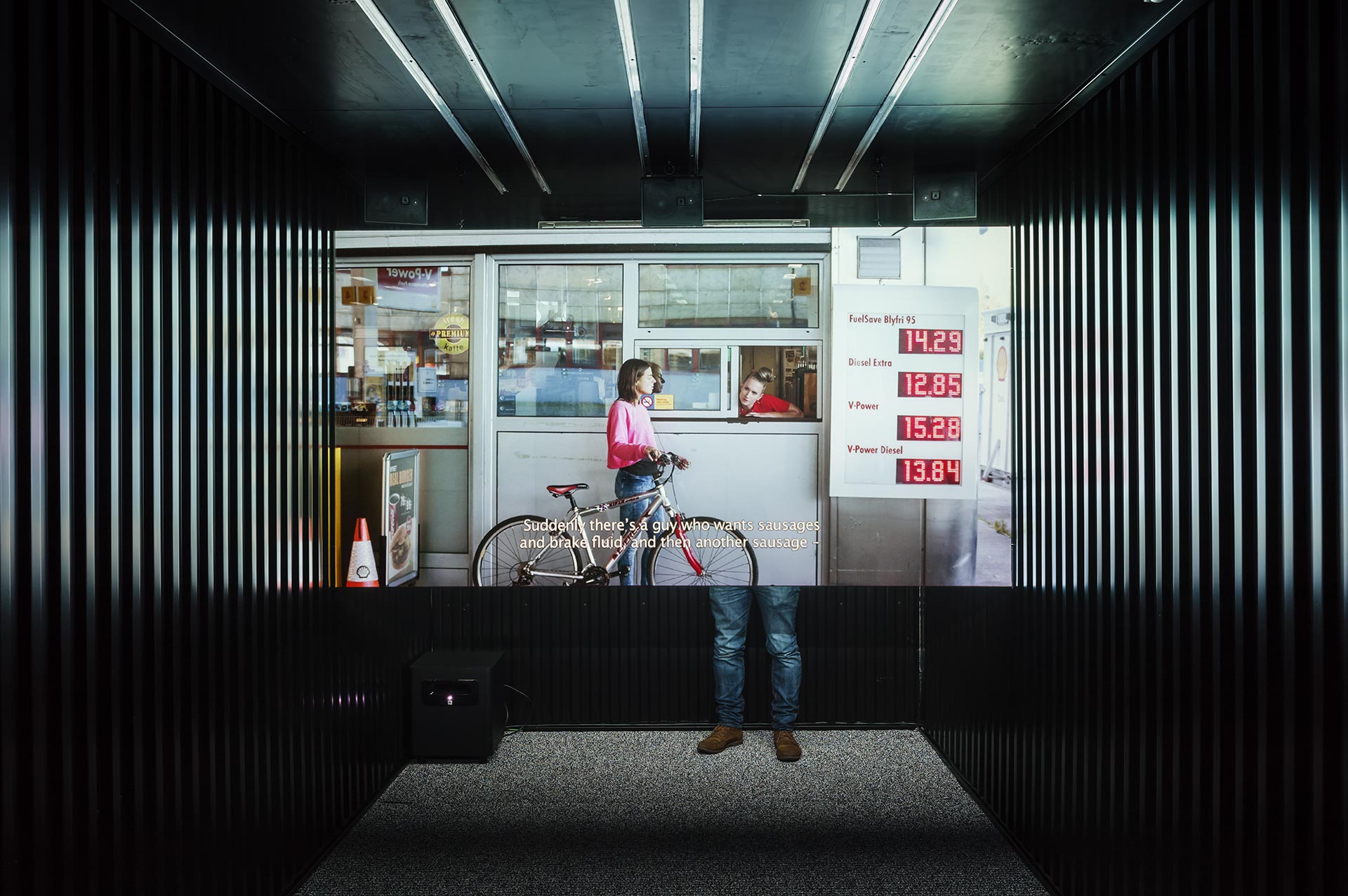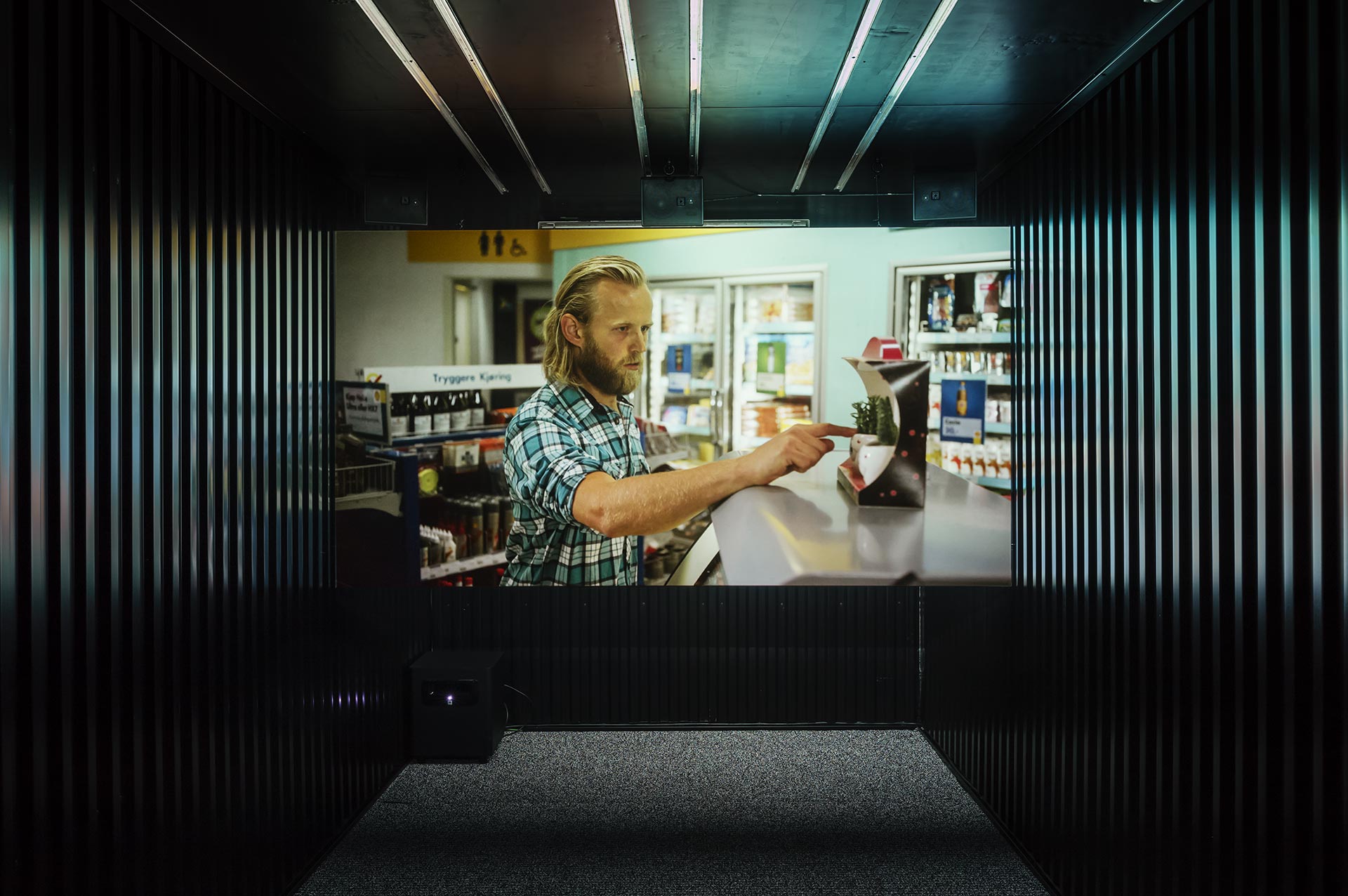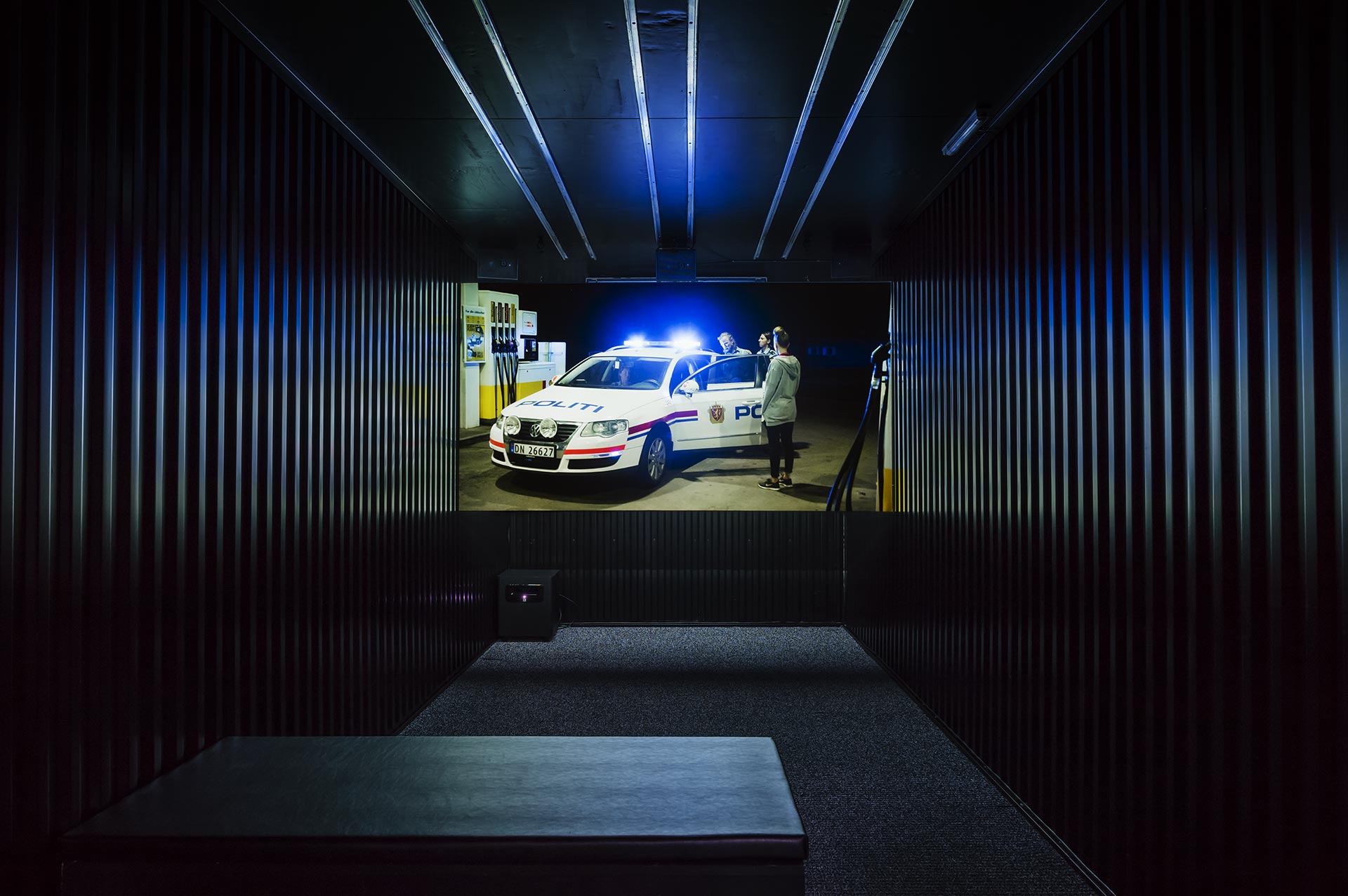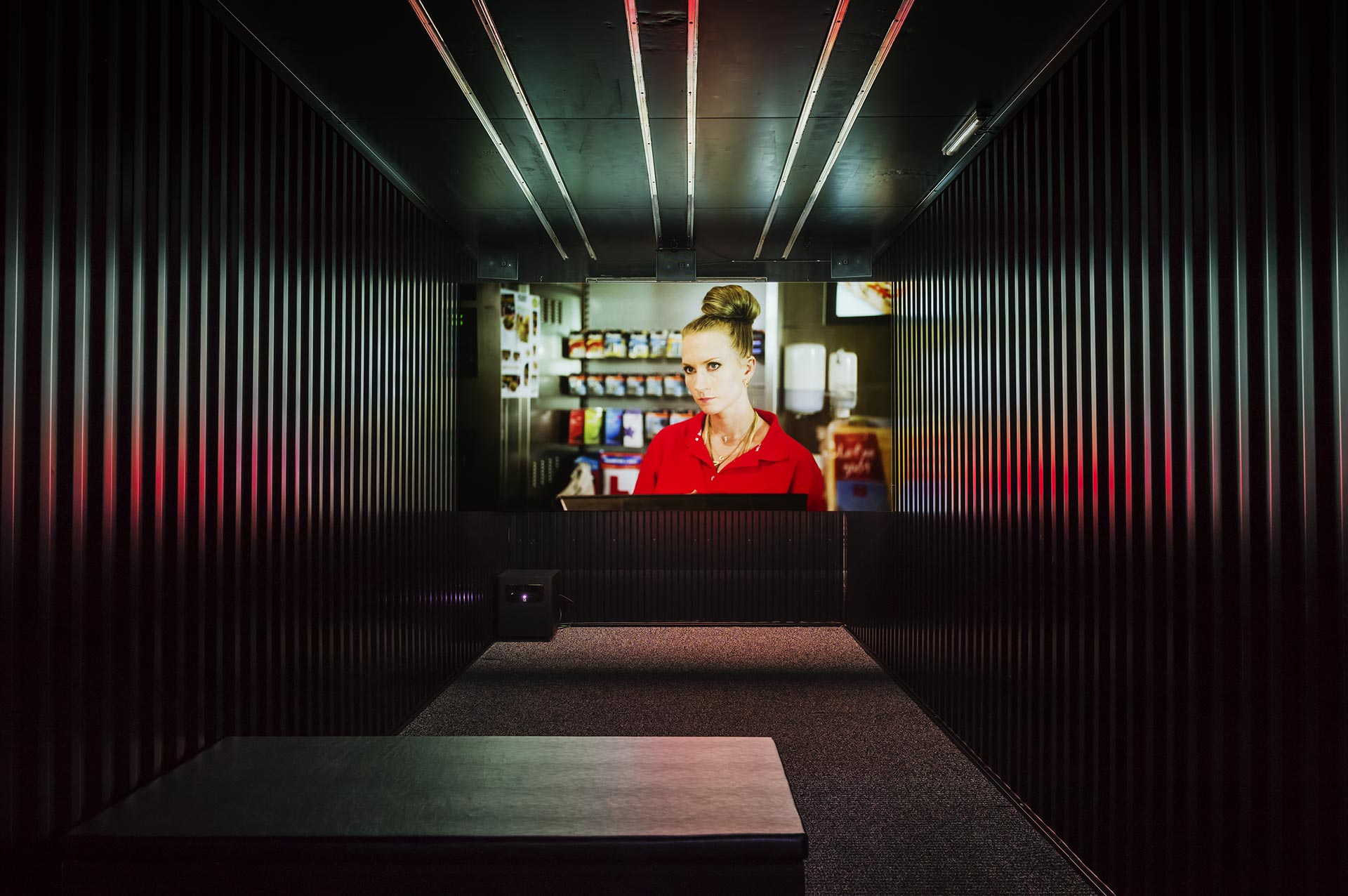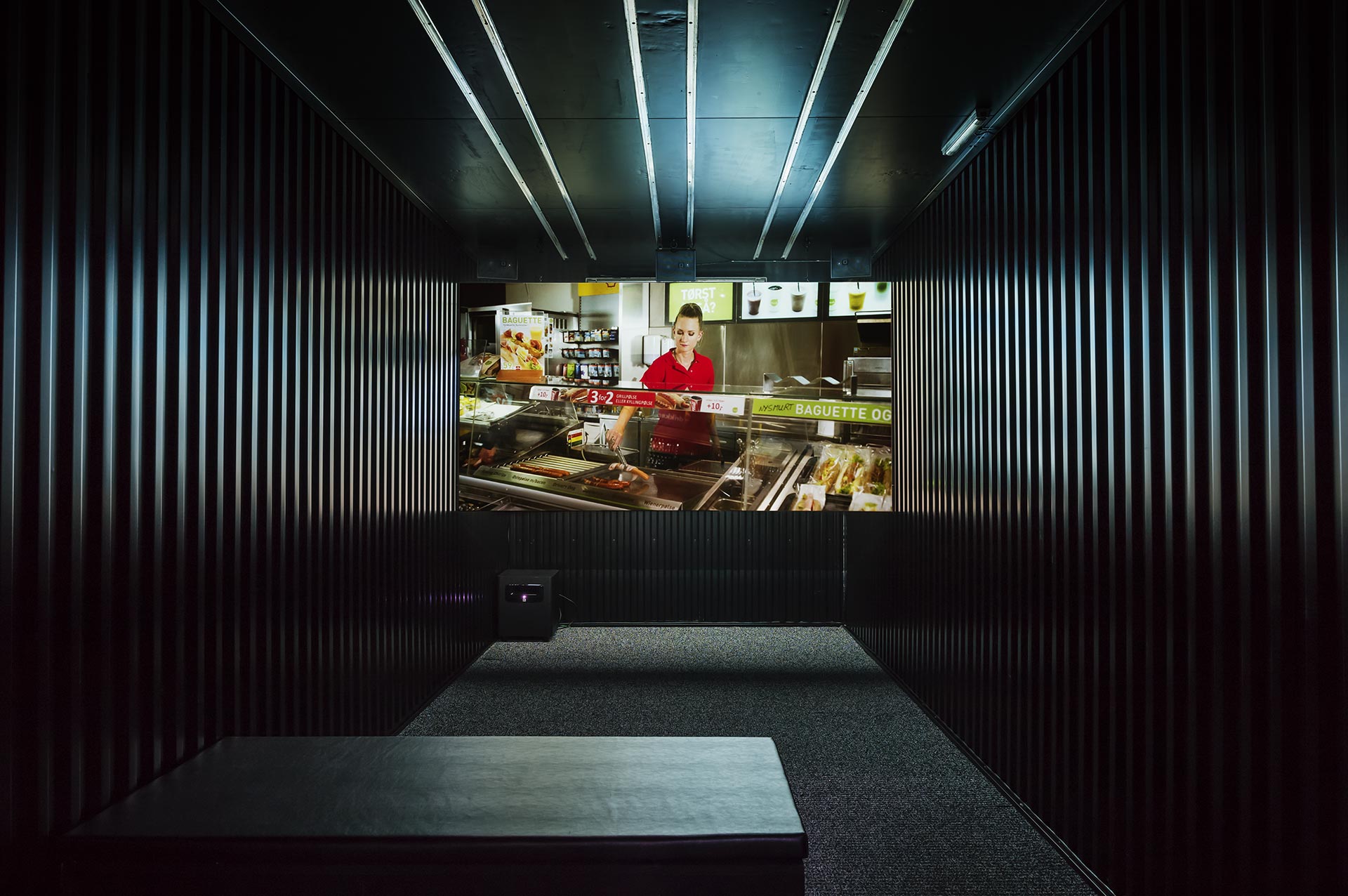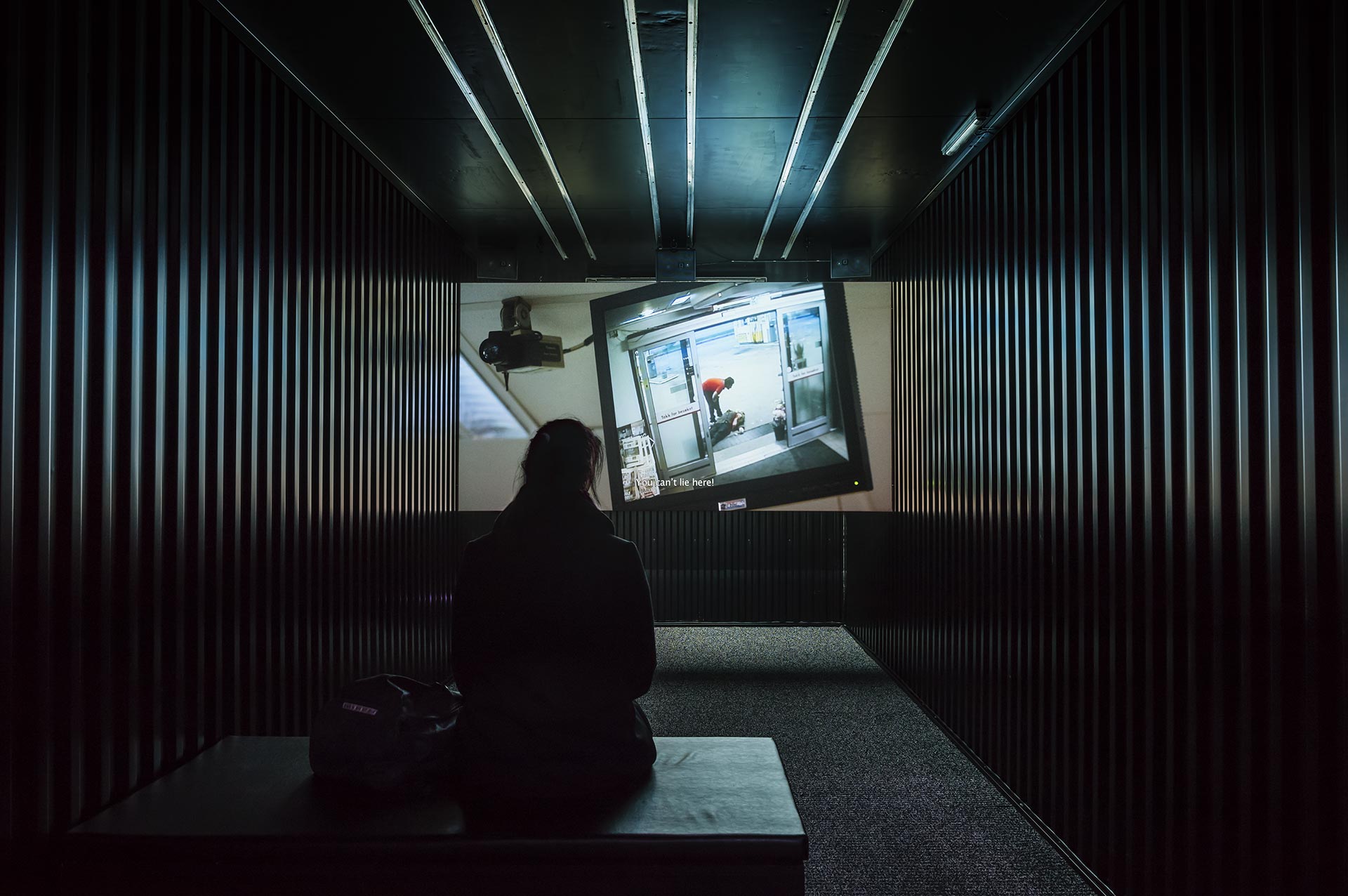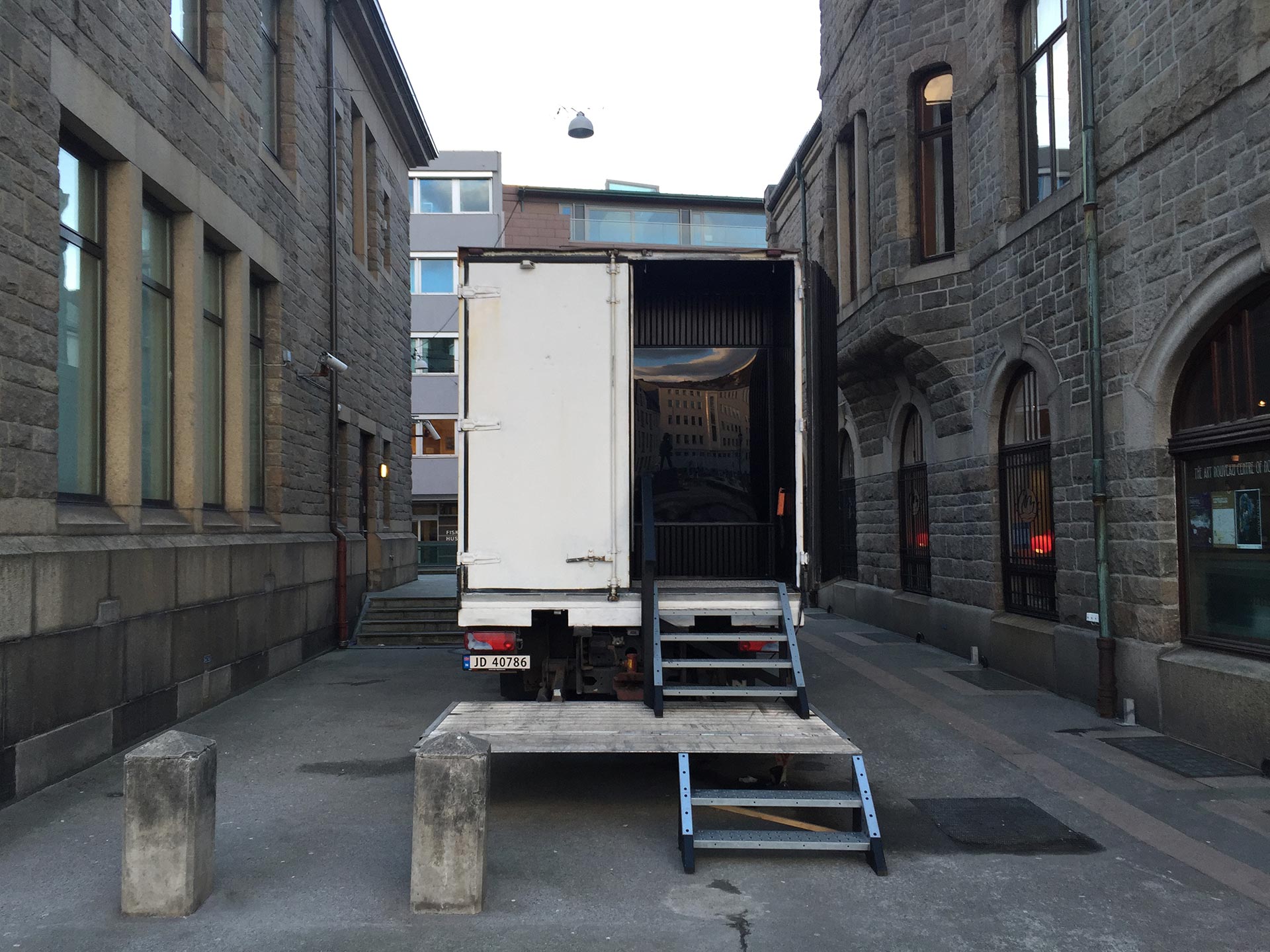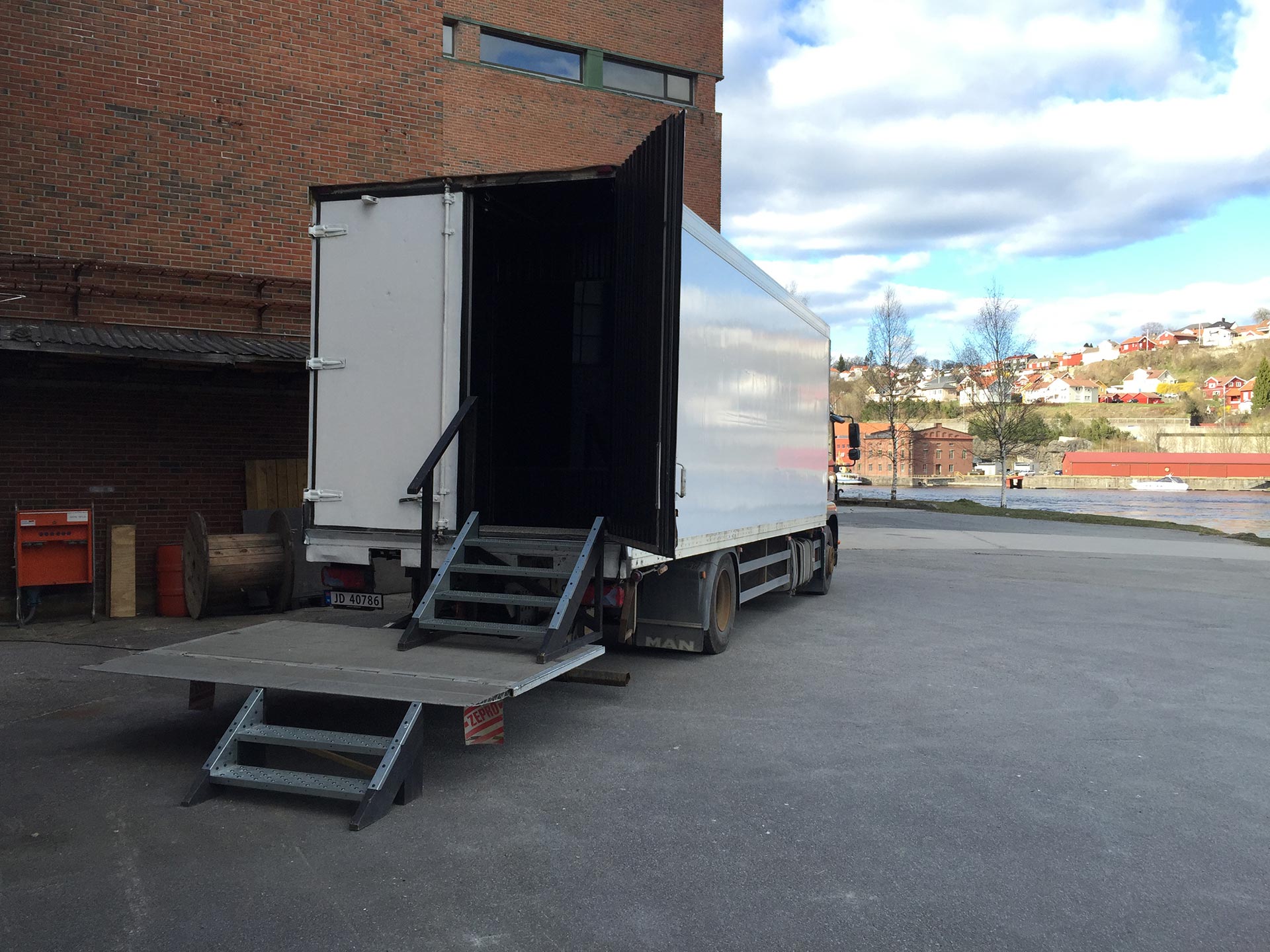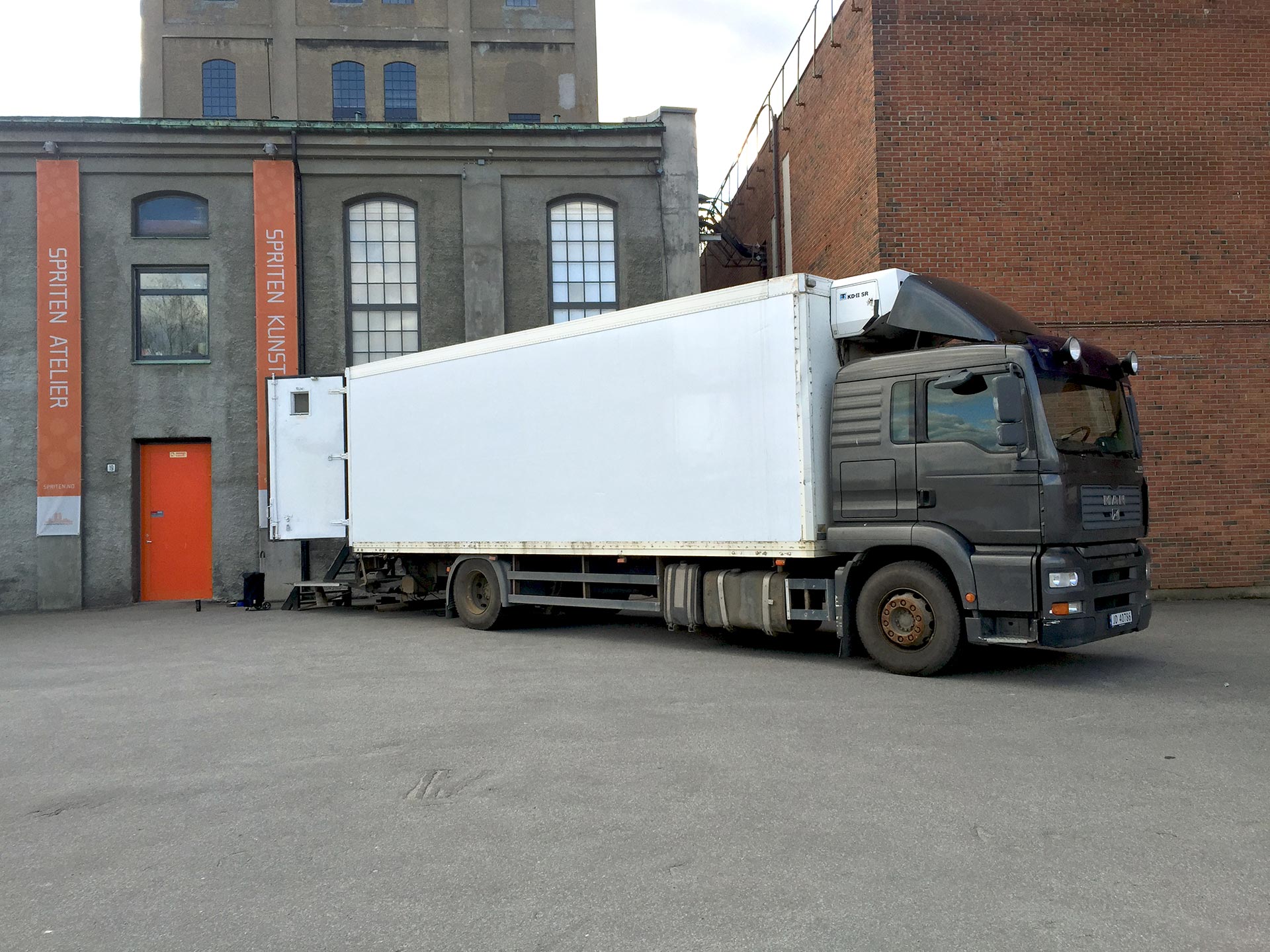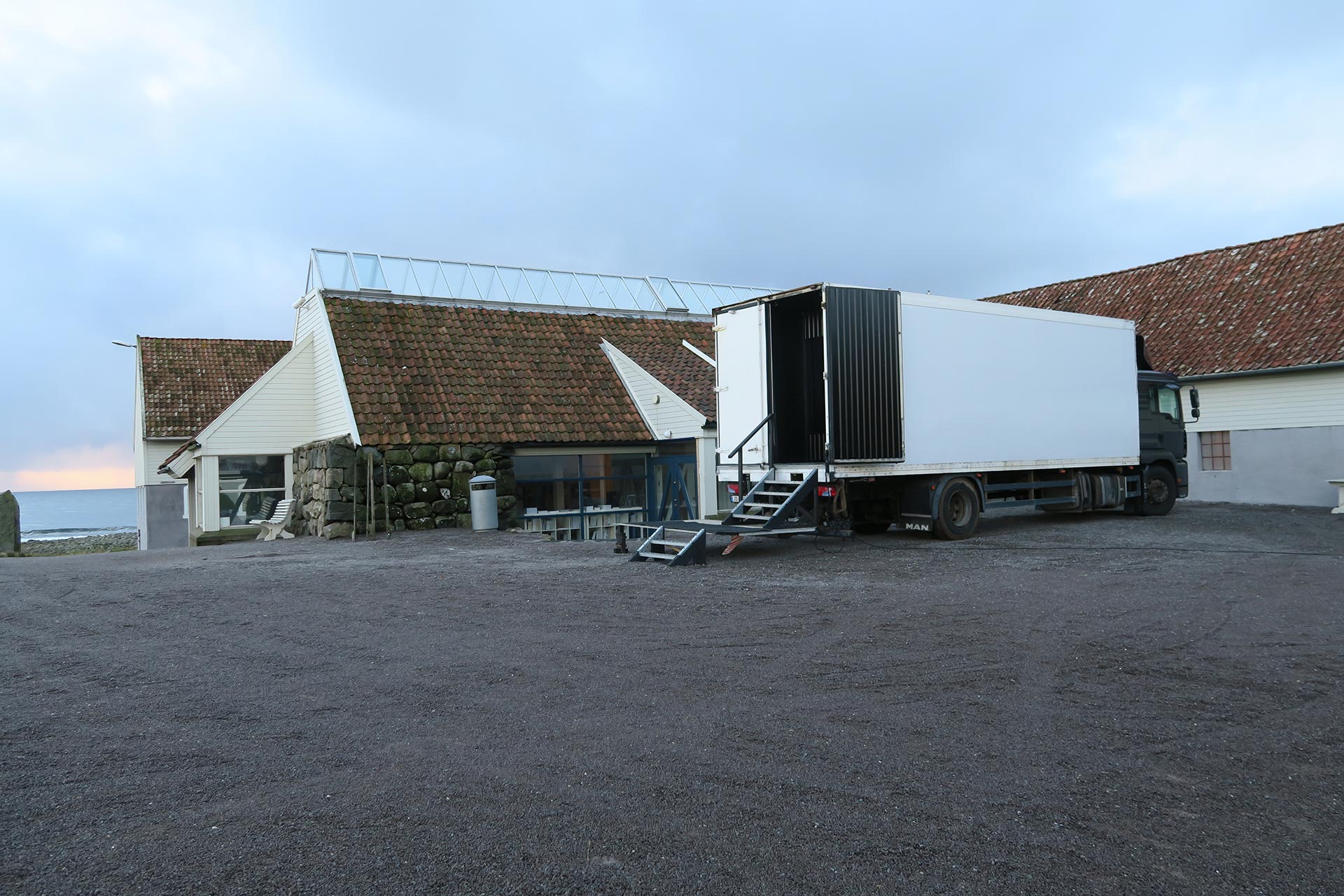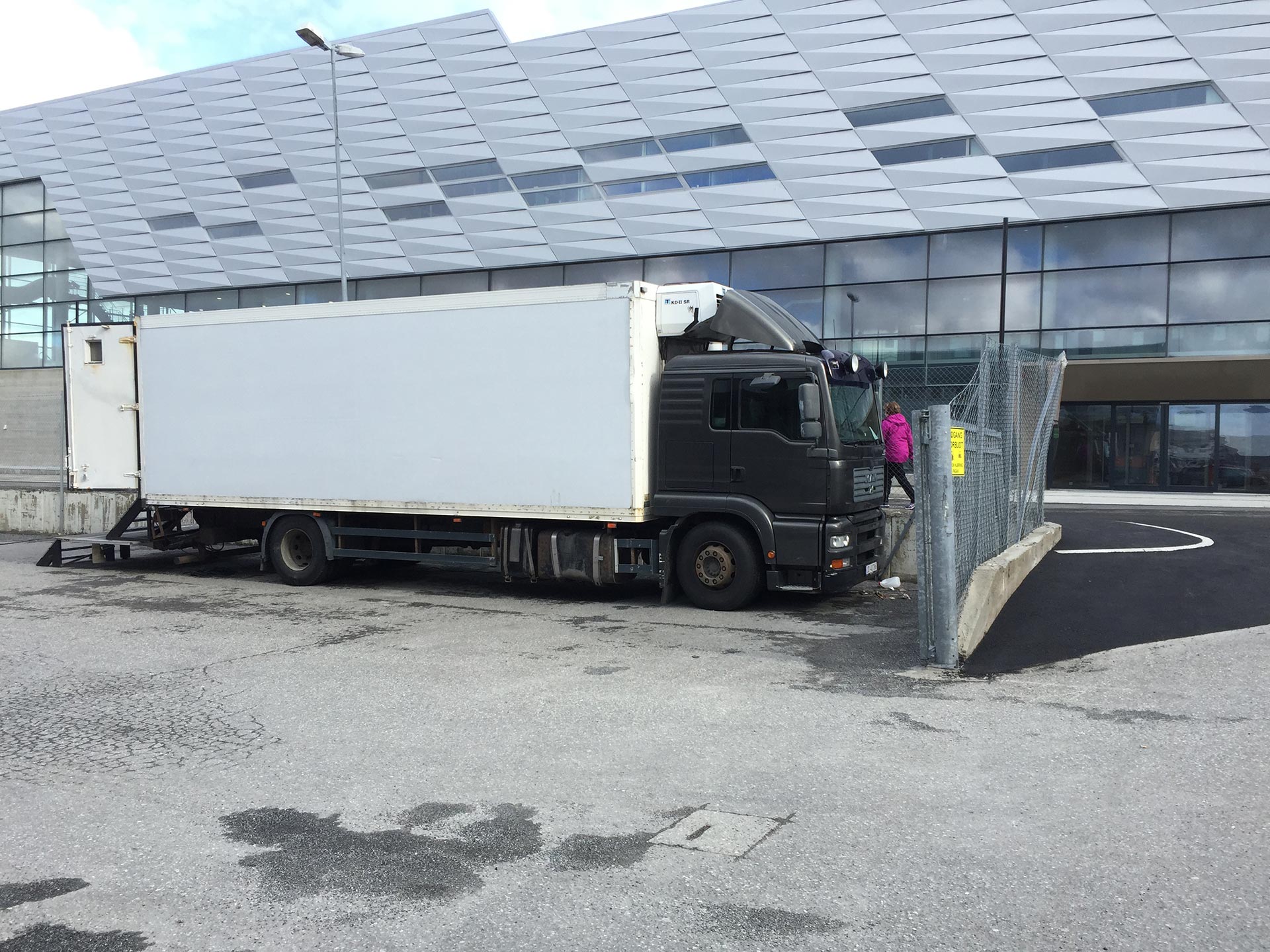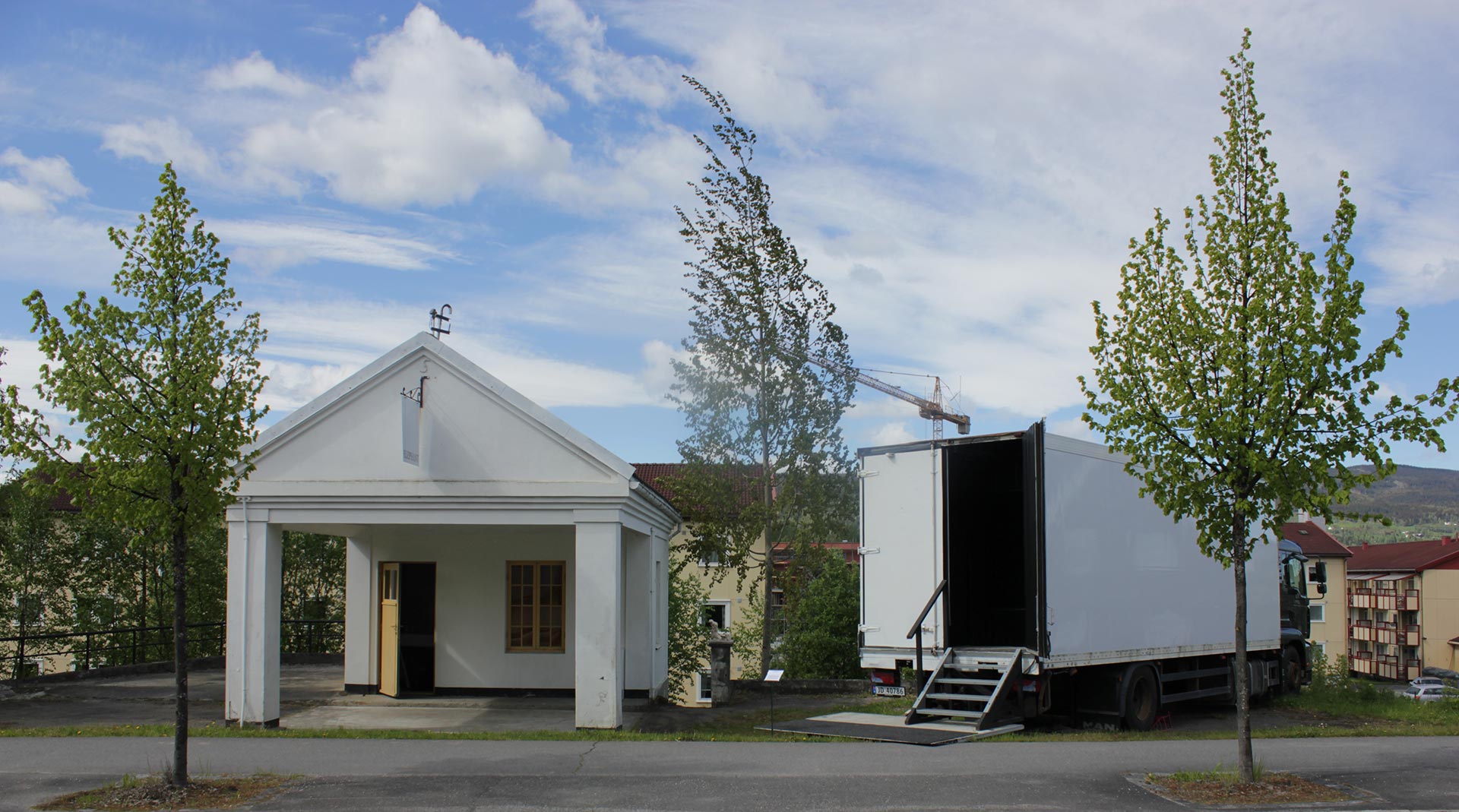Mobil Egress
11m lorry with film installation screening Egress (2013). Lorry, industrial metal wall paneling, metal frame with two sided projection screen. 5.1 sound system, HD projector and harddisk playback. 2015-2017
Egress (2013): 41 min, 5K to 2K, colour, 5.1 audio, 1:1.89 aspect ratio.
Egress (2013): 41 min, 5K to 2K, colour, 5.1 audio, 1:1.89 aspect ratio.
Producer (lorry installation): KORO/URO. Producer (film): Knut Åsdam Studio (Oslo). Co-producers: Vitakuben (Leipzig). Supported by Norwegian Film Institute, Nord Norsk Film Senter, the Norwegian Embassy, London, Arts Council Norway, Fritt Ord/Freedom of Expression Foundation, KORO, Lorck Schive Kunstpris.
Mobil Egress is a touring lorry; an architectual art/film/cinema installation with the film Egress built inside the back compartment. It functions as a mobile cinema and is built up from installation elements to create an architectonic environment. The piece merges art and film distributed in an unusual way. It looks at contemporary Norway and its psychology through themes of work, class, oil and the material world. The tour began at Kunstnernes Hus in Oslo, January 2015 as a part of the exhibition Krigens Skygge/The Shadow of War on political art in Norway between 1914 - 2014.
The idea is to extend the way art and film is shown and distributed in Norway. Åsdam aims to bring the notions of extended cinema out of an academic association which is not necessarily art related for an unspecified audience to public places across the country. The film is a critical view on the present Norwegian society made accessible regardless of whether there is a cinema or a screening room, allowing for contemporary art and experimental film to reach an audience that are usually restricted because of geography, following the tradition of the traveling cinemas and “art-tents” in Europe that toured singular art works to audiences outside the large centres.
The film Egress is a narrative set in a gas station in the edgelands of Oslo. The main characters work at the bottom of the oil company hierarchy and are engulfed in the everyday and the dark economic and psychological shadows of their society. The main protagonist deals with her every day work situation with independence and stubbornness in her work and life in the periphery of the city. However, the film is saturated by consumer economy and work that is mostly the upkeep of surfaces that sell products. Egress also carries a sense of petro-psychology that seeps into everything, and that leads to both an implosion of violence by two men onto themselves, and also the main character to flood the tanking area with diesel. These aspects are also carried through small diversions into nearby container housing for workers, and suburban shopping and housing complexes. There are small areas of transgression though - the seeming intimacy between two other staff, in the playful conversations that weer off from the work into rank, class, and media concerns, - and of course, the final bizarre scene with the flooding of the garage floor. Each represent things that could lead in different ways to an egress - a way out.
The film shows relationships between control and independence, about labour, class and work, but it is also a poetic film about a socially insecure edgeland of the city—and about a psychological flipside or cost of the everyday, somewhere near the bottom of the huge economic ladder of the oil industry which secures Norway's stability. Egress' world is a world of social instability and economic insecurity as part of a society undergoing major changes. Egress is shot entirely on "location" in Oslo's Groruddalen, mainly between an apartment complex and a gas station. The film is an experimental fiction built up from documentary material which mixes the environment- and character-based to talk about contemporary society.
Watch a preview versio of Egress here (you will need a password from us):
Mobil Egress is a touring lorry; an architectual art/film/cinema installation with the film Egress built inside the back compartment. It functions as a mobile cinema and is built up from installation elements to create an architectonic environment. The piece merges art and film distributed in an unusual way. It looks at contemporary Norway and its psychology through themes of work, class, oil and the material world. The tour began at Kunstnernes Hus in Oslo, January 2015 as a part of the exhibition Krigens Skygge/The Shadow of War on political art in Norway between 1914 - 2014.
The idea is to extend the way art and film is shown and distributed in Norway. Åsdam aims to bring the notions of extended cinema out of an academic association which is not necessarily art related for an unspecified audience to public places across the country. The film is a critical view on the present Norwegian society made accessible regardless of whether there is a cinema or a screening room, allowing for contemporary art and experimental film to reach an audience that are usually restricted because of geography, following the tradition of the traveling cinemas and “art-tents” in Europe that toured singular art works to audiences outside the large centres.
The film Egress is a narrative set in a gas station in the edgelands of Oslo. The main characters work at the bottom of the oil company hierarchy and are engulfed in the everyday and the dark economic and psychological shadows of their society. The main protagonist deals with her every day work situation with independence and stubbornness in her work and life in the periphery of the city. However, the film is saturated by consumer economy and work that is mostly the upkeep of surfaces that sell products. Egress also carries a sense of petro-psychology that seeps into everything, and that leads to both an implosion of violence by two men onto themselves, and also the main character to flood the tanking area with diesel. These aspects are also carried through small diversions into nearby container housing for workers, and suburban shopping and housing complexes. There are small areas of transgression though - the seeming intimacy between two other staff, in the playful conversations that weer off from the work into rank, class, and media concerns, - and of course, the final bizarre scene with the flooding of the garage floor. Each represent things that could lead in different ways to an egress - a way out.
The film shows relationships between control and independence, about labour, class and work, but it is also a poetic film about a socially insecure edgeland of the city—and about a psychological flipside or cost of the everyday, somewhere near the bottom of the huge economic ladder of the oil industry which secures Norway's stability. Egress' world is a world of social instability and economic insecurity as part of a society undergoing major changes. Egress is shot entirely on "location" in Oslo's Groruddalen, mainly between an apartment complex and a gas station. The film is an experimental fiction built up from documentary material which mixes the environment- and character-based to talk about contemporary society.
Watch a preview versio of Egress here (you will need a password from us):
Links
